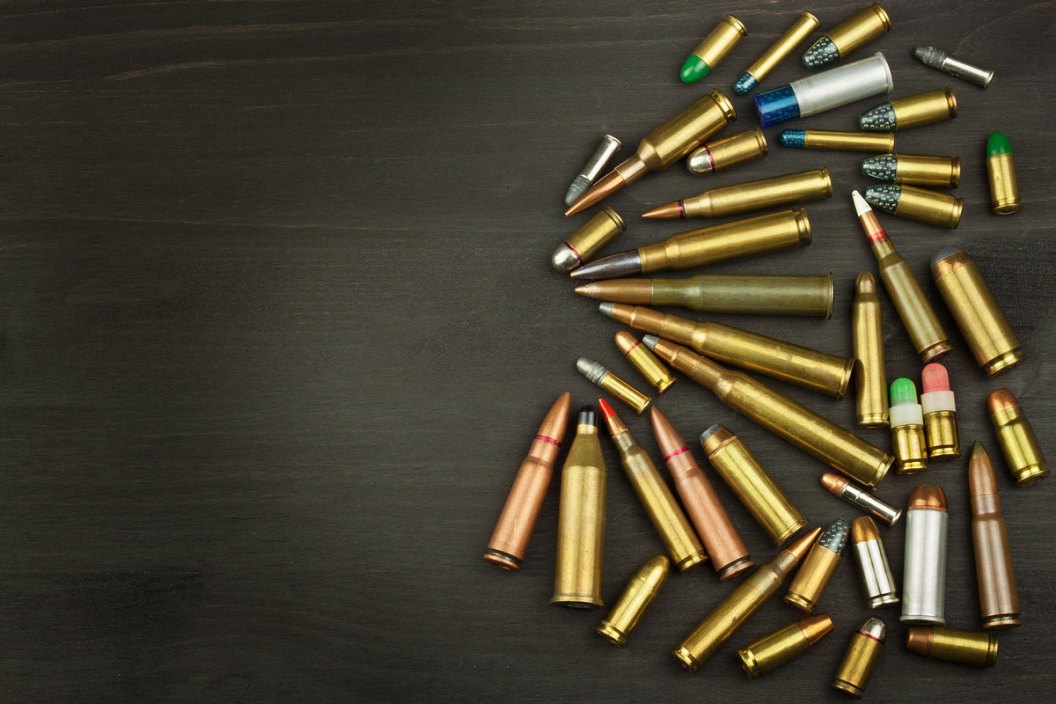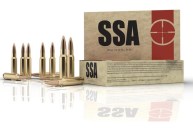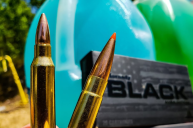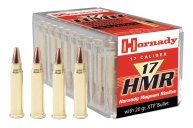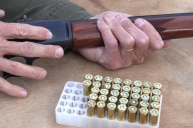The rimfire came first and is still around, but it's a lot less capable than centerfire ammo.
The metallic cartridge was a huge innovation that changed the entire essence of what firearms are and how they operate.
Before they came along in the form of rimfire ammunition, the only reliable repeater out there was a revolver, but shooters had to load each chamber at a time with powder and a bullet.
Then, someone had the bright idea to wrap a pre-measured load of powder behind a bullet in rolled paper, like a volatile cigarette. This made reloading easier and allowed for some of the earliest breechloading firearms.
Finally, the first metallic cartridges combined a bullet, a powder charge and, of course, a primer contained in a metal case.
The primer is what creates the small explosion that ignites the powder that propels a bullet through a barrel. Before metallic cartridges, percussion caps, similar to primers, were a separate element that was fit on a nipple beneath a hammer for each shot.
Some of the earliest metallic cartridges were rimfire cartridges. Rimfire ammunition has priming compound inside the circular, protruding rim on the bottom of the casing.
When a rimfire gun is fired, the firing pin crushes the rim on one or two sides against the barrel breech, which compresses and ignites the priming compound in the rim. This, in turn, ignites the propellant in the case.
Today, there are basically two major types of ammunition for handguns and rifles: centerfire and rimfire.
Rimfire Cartridges Hit the Scene
Around the advent of metallic cartridges, a number of ignition systems were brought to market, like pin-fire ammunition, but the rimfire was by far the most stable and most reliable. In fact, the .22 Long Rifle cartridge, which came around in 1887, is not only still in use, but extremely common in the 21st century serves a number of purposes in both the hunting and competition shooting spaces.
Interestingly, the first rimfire cartridges were basically novelty items. A Frenchman, Louis-Nicolas Flobert invented the first rimfire cartridge in 1845: the 6mm Flobert. It was basically a percussion cap with a bullet attached to it and had no propellant other than the percussion cap itself. The cartridge was also called the .22 BB Cap and had a very low muzzle velocity of about 700 fps.
Have you ever wondered where the term "shooting parlor" comes from? Flobert created "parlor guns" to go with his low-powered cartridge. They were rifles and pistols meant to actually be shot inside the home in small shooting ranges called shooting parlors or shooting galleries, just like the ones that used to be a mainstay at fairs and carnivals.
The next rimfire cartridge was a more practical one that actually had propellant. Smith & Wesson created the .22 Short for its first revolver in 1857 and used a case holding 4 grains of black powder topped with a conical bullet. The .22 Long came in 1871 with a case that held 5 grains of black powder, followed by the .22 Extra Long in 1880, which fired a heavier bullet from a longer case.
Back in the day, rimfire rounds were anything but small. Before they were replaced, black powder rimfire cartridges were made in larger calibers like .44, .45, and even .56 caliber, which were powerful, but still low-pressure.
Rimfire Limitations
While rimfire ammo is obviously an excellent design that has withstood the test of time, rimfire cartridges are limited to low pressures simply because the material of the cartridge case, usually brass, must be thin enough so that a firing pin can actually crush its rim. Low pressure means low muzzle velocity, which means limited range.
With the advent of smokeless powder, which generates much higher pressures than black powder, rimfire rounds were relegated to smaller calibers in the neighborhood of .22s, mostly suited for small game hunting, target shooting and plinking.
While the manufacturing process for rimfire ammo in a factory is fairly simple, it's no so easy in other settings. Technically rimfire rounds are reloadable at home, but it's a bit difficult and the necessary priming compounds are volatile when exposed and dangerous to work with.
Centerfire Ammo
Centerfire ammunition returned to having a primer as a separate element. Instead of a rim filled with primer material, they use a primer that is fitted into a primer pocket in the center of the cartridge's base.
A firing pin strikes the primer in its center, igniting the propellant inside. This means a centerfire cartridge can have a rim or it can be rimless, like centerfire revolver ammunition. Also, the cases can be as thick as necessary to handle high-pressure rifle rounds and magnum handgun rounds.
A number of primers were used in the early days of the centerfire, but the ones we know and use today are called Berdan primers, named after the New York inventor, Hiram Berdan. He patented the first version of his primer in 1866, which used copper casings.
The primer was quite similar to the percussion caps used in caplock guns, in that they consist of a small metal cup with a pressure-sensitive explosive inside. It contains a priming compound, which the firing pin strikes, crushing the primer against a bump in the primer pocket called the anvil, ultimately causing it to ignite the propellant through a vent hole.
On the hunting side of things, centerfire cartridges are capable of taking larger game more reliably and at longer distances.
When it comes to the battlefield, rimfire ammunition was quickly seen as underpowered when compared to new centerfire cartridges, just as they were for self-defense. They're also more reliable for military use because of their thicker cases, which can stand up to rougher handling and transportation without deformation or damage.
The higher pressures generated by centerfire ammo allow bullets to travel faster with more energy. Economy of scale was achieved through the standardization of interchangeable primers that work with a wide variety of cartridges and calibers. Centerfire is also much easier and safer to reload.
NEXT: THE GREY: WHAT WE, AS OUTDOORSMEN, LOVE ABOUT THIS SURVIVAL MOVIE
WATCH
